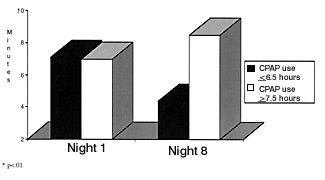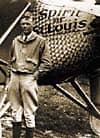Successful CPAP compliance goes beyond simply fitting the mask.

Compliance is a difficulty for home care companies, sleep centers/laboratories, and patients. There are many mitigating factors for improving CPAP compliance, which vary from center to center, based on the patient’s condition and the communication between patient, sleep specialist, and home care company.
During the night of the sleep study, patients are titrated to their individual CPAP therapeutic pressure. It is documented that at the titrated pressure, the patient’s OSA is being treated. Also during their study, patients are set up, fitted, and assisted with the mask and CPAP unit by the sleep technician; thus, most patients will wear their CPAP interface throughout the night. The focus of this article is how to achieve those same long-term goals at home. The best way to start to improve CPAP compliance is with patient education.
Patient Education
Patient education usually starts before patients come into the center for their CPAP study. Most patients are familiar with chest x-rays, blood work, and various other diagnostic tests, but ask someone what a sleep study with CPAP titration is, and most will look at you like you are speaking a foreign language. Patients need to be informed of what disorder they have (for example, OSA), and the different modalities that can treat it; however, the best treatment for SDB is CPAP therapy.
Sleep technicians can begin with a description of what happens when an apnea/hypopnea event occurs. An anatomical chart of the sagittal section of a human head or a model of the upper airway is a good way to show what it looks like, while patent or occluded. A discussion of how typical OSA patients appear to their bed partners is also very useful. If a patient goes from snoring to not snoring, they usually snort and move about (which most husbands and wives have witnessed). This is an example of a person who is breathing, not breathing, then arousing to breathe again.
Pamphlets can be obtained from a variety of sources. The AASM and National Institutes of Health are excellent sources of patient information. The AASM has pamphlets on many sleep disorders as well as testing procedures and CPAP therapy.
Patient education should include hands-on activities including fitting patients with a mask by letting them place it on their face and take it off. The next step would be to have the patient experience what CPAP pressure would feel like. Start off with a low pressure of 4 cm H2O to 6 cm H2O while the tube is not connected to the mask, and have the patient experience the airflow as well as occlude the opening to let them feel how much pressure there is. Most patients complain that there is too much air and/or pressure when CPAP is applied. When the patient feels the flow and the pressure with their hands prior to the application of the CPAP mask to their face, they will more readily accept using the device. Besides educating the patient, education of the spouse or bed partner is also important. The patients you see at the sleep center are usually sent there from a doctor or, even more commonly, their spouse. The most common statement I hear is that “I can sleep anywhere and anytime. She’s/he’s the one with the problem.” Patients become forgetful, and I find it more common than not that the bed partner is reminding them to wear the CPAP mask. Getting a patient into a routine is very important to treat their SDB.
Challenges of Masks
One of the challenges of using a nasal mask is that when patients open their mouth to talk, air is blown out of the mouth very rapidly. This is due to the fact that, anatomically, the nasal oral airway is one open area. Occasionally, patients will be startled by that sensation. If patients are educated to lie on their back, just breathe through their nose, and try to relax, they will fall asleep and CPAP will usually work fine. There are occasions when a full face mask would need to be used such as for patients with nasal problems (a deviated septum, chronic sinus infections, and polyps), and they will find it more challenging. Overall, I have found full face masks are used more frequently on patients who have severe OSA and/or who are obese.
Full face masks bring a few problems of their own, such as claustrophobia, aspiration of air, and the decreased ability of patients to communicate with their technician. For patients who can tolerate a full face mask, the mask works very well, but for others, it can be a disaster. The patient must understand the mask’s application, how to remove it, and in the event of an emergency, what would be the best, fastest, and easiest way to take it off. If, in the middle of the night, a patient swallowed air and needed to vomit, the sleep technician should have told the patient how to remove the mask, which will reduce the chances of inhaling the vomit.
Educating patients about the use of heated humidifiers is just as important as educating them about the CPAP mask itself.2 The nose performs three primary functions: it warms, humidifies, and filters the air. When CPAP is applied to patients without humidification, two common complaints can be heard, such as the nose being too dry (promoting nose bleeds) and congestion. If sleep technicians want patients to use CPAP at home on their first night, educating them at the sleep center is critical. If patients wake up congested and find it difficult or impossible to breathe out of their nose, the likelihood of continued CPAP use at home is slim at best. Use of a heated humidifier in the sleep center is vital for patients’ long-term compliance. Most people are resistant to change, but having a heated humidifier at the sleep center and at home can be a seamless transition for the patient and can lead to increased compliance.
The severity of the patient’s illness is also a factor in their compliance and the long-term success of CPAP therapy.3 Someone who has an apnea/hypopnea index (AHI) that is mild (<10 events per hour of sleep) as compared to a patient who has severe OSA (AHI >40 events per hour of sleep) is less likely to feel a drastic improvement in their sleep or in their excessive daytime sleepiness (EDS). People who have severe OSA also have severe fragmentation of sleep. CPAP will decrease OSA to a normal range (<5 events per hour of sleep), thus decreasing their sleep fragmentation and improving their sleep architecture. Someone with mild OSA will also have fragmented sleep, but it will not necessarily be as severe. The other consideration is the severity of desaturations. Patients’ saturations have an apparent effect on their level of EDS, and CPAP while maintaining a patent airway will also (hopefully) normalize their saturations.
Follow-up
Patient follow-up concerning CPAP compliance is also important. There have been incidences of patients being set up on CPAP therapy and then totally forgotten. Patients need to be followed up by both the home care company as well as the sleep center. Phone calls, follow-up office visits, and mailed-out questionnaires are a good start, but making sure the patient is accurately using the CPAP machine is very important. There are CPAP machines that have the ability to download information, which can be very useful in following patient care at home. Patients will occasionally lie about using the machine. For example, they might say they are using their CPAP machine every night and how often, but they aren’t. These downloads can monitor when patients start the CPAP and stop it, how often they interrupt usage, and how many days per week they are using it. It is also useful for adjusting CPAP therapy. For instance, someone who is on CPAP and sleeps in later on Saturdays and Sundays, but is still exhibiting some signs of EDS, may be under- or over-titrated. With some minor adjustments, sleep technicians can improve the patient’s quality of sleep.
Another warning sign is the patients who say they are using their CPAP units and have no problems with them, but how many will call the sleep center or the home care provider to replace items. There are patients with masks that are 2 (or more) years old and have never received a replacement. Filters, masks, seals, headgear, and hoses should all be replaced regularly. As these items are purchased it will feed back to the patient to remind them to use (hopefully use) the equipment.
CPAP compliance, overall, is a complex process that needs to be tailored to the specific sleep center, the patient population, and the severity level of the patients. There is no specific rule or plan that will work in all situations. It is a trial process that needs to be reviewed and improved upon over time. Keep in mind that patient care is the goal, and that includes therapy at home. CPAP compliance is a major part of that care process.
Russell E. Rozensky, RRT, RPSGT, CPFT, is supervisor at John T. Mather Memorial Hospital, Sleep Disorders Center, Port Jefferson, NY.
References
1. American Thoracic Society. Indications and standards for use of nasal continuous positive airway pressure (CPAP) in sleep apnea syndromes. Official statement. Am J Respir Crit Care Med. 1994;150:1738-1745.
2. Massie CA, Hart RW, Peralez K, Richards GN. Effects of humidification on nasal symptoms and compliance in sleep apnea patients using continuous positive airway pressure. Chest. 1999;116:403-408.
3. McArdle N, Devereux G, Heidarnejad H, Engleman HM, Mackay TW, Douglas NJ. Long term use of CPAP therapy for sleep apnea/hypopnea syndrome. Am J Respir Crit Care Med. 1999;159:1108-1114.



